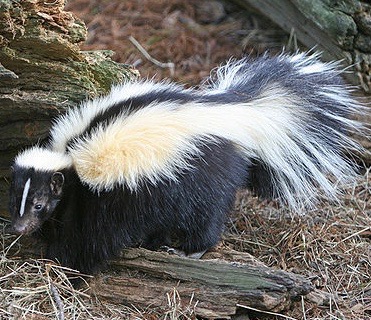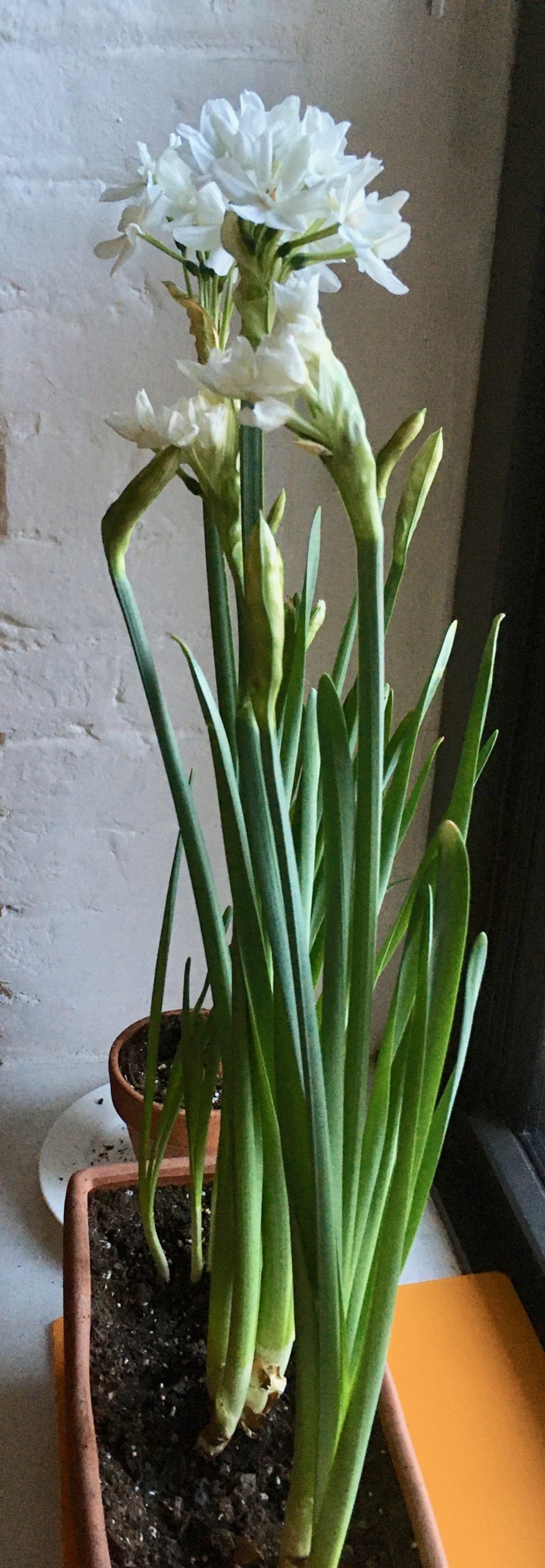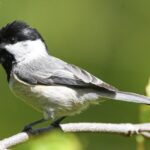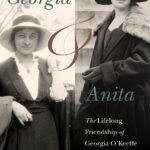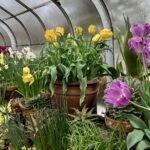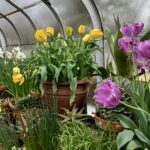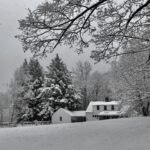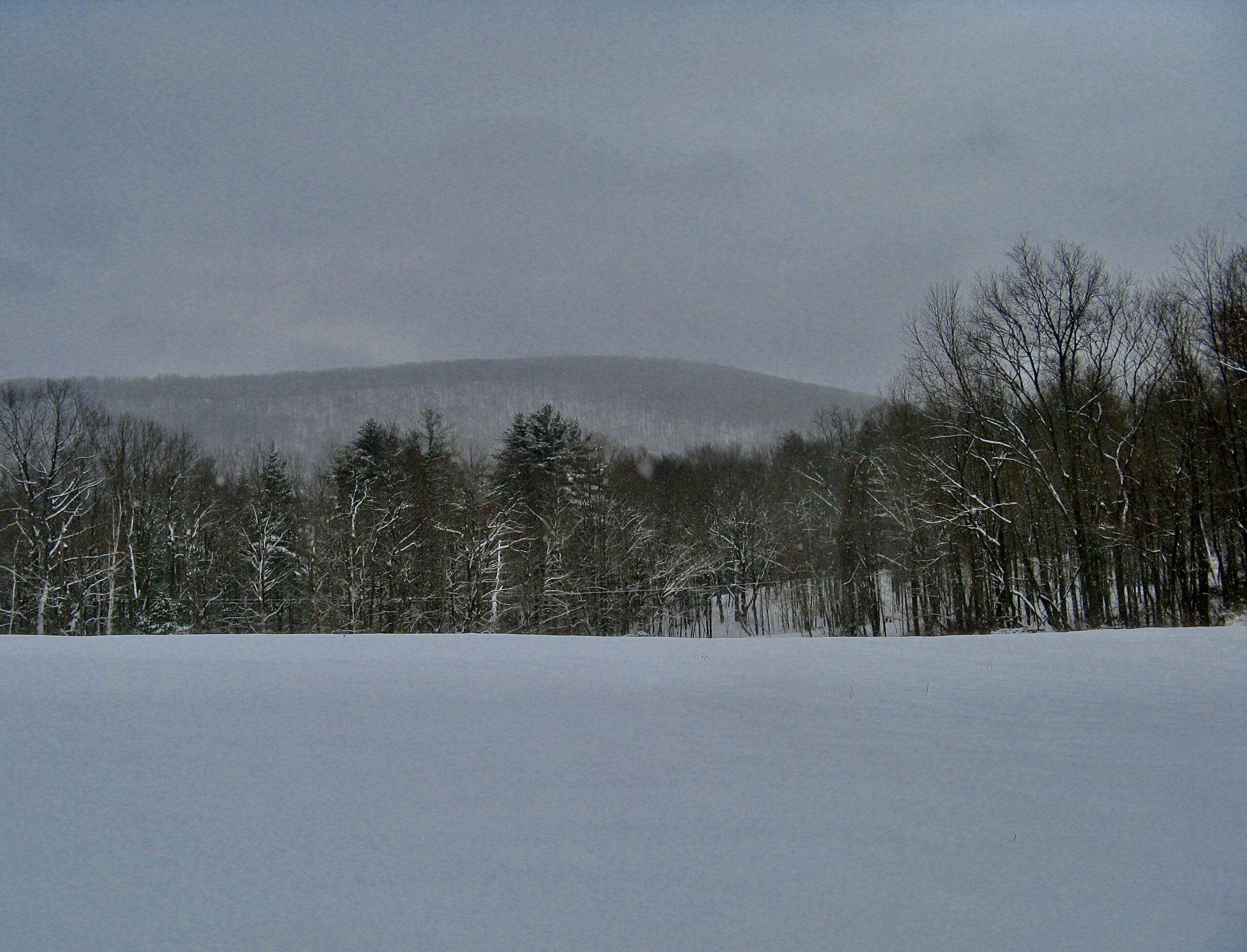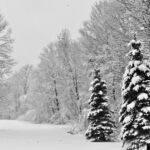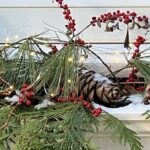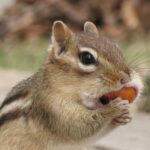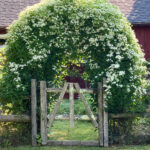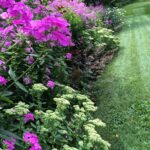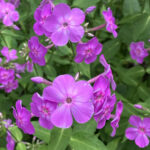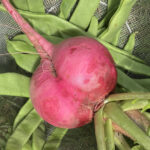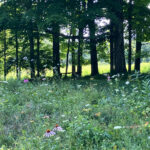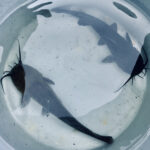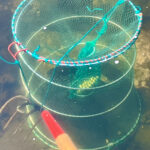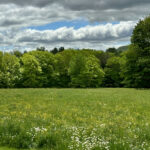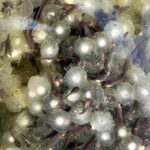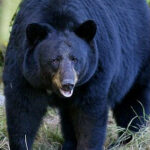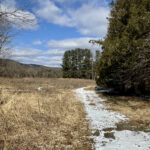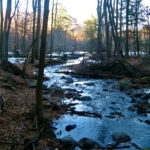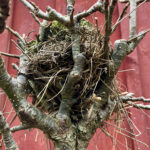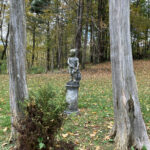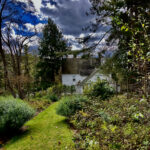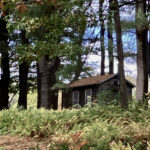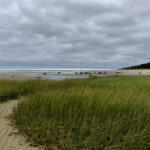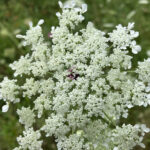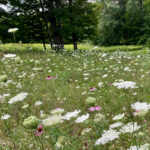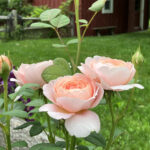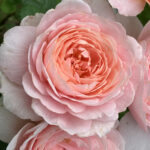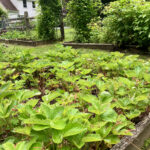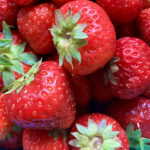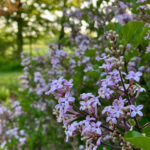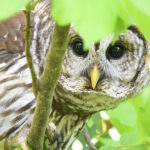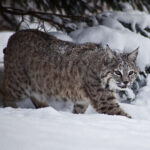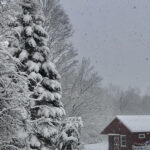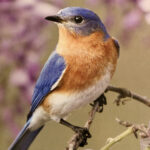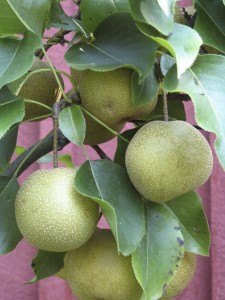 I looked up from weeding the vegetable beds a few weeks back to see that half the pears on our espaliered pear trees that we’d trained against the side of the barn were gone. Branches that had been drooping with fruit just the day before had been stripped bare, a bountiful harvest of Bartlett pears vanishing into thin air overnight. Occasionally, in the past, we’d find a half-eaten, partially ripened pear on the ground under the trees, the work of the chipmunks who’ll try anything once, even the eggplant I discovered, still on its vine, covered in disgruntled t0othmarks. But the pear theft was more like a heist, a clean, professional sweep of the goods with no sign of the culprit or how the sting was pulled off. Interestingly, though, only the Bartlett pears were stolen. Our tree of Asian pears was left untouched. Continue reading
I looked up from weeding the vegetable beds a few weeks back to see that half the pears on our espaliered pear trees that we’d trained against the side of the barn were gone. Branches that had been drooping with fruit just the day before had been stripped bare, a bountiful harvest of Bartlett pears vanishing into thin air overnight. Occasionally, in the past, we’d find a half-eaten, partially ripened pear on the ground under the trees, the work of the chipmunks who’ll try anything once, even the eggplant I discovered, still on its vine, covered in disgruntled t0othmarks. But the pear theft was more like a heist, a clean, professional sweep of the goods with no sign of the culprit or how the sting was pulled off. Interestingly, though, only the Bartlett pears were stolen. Our tree of Asian pears was left untouched. Continue reading
The pear thief
Blue hydrangea
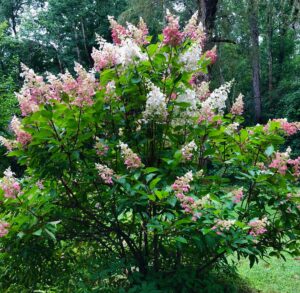 In late August, hydrangeas take center stage in the Berkshires. And in a summer with so little live music, dance, or theater, they’re putting on a welcome show. Our “Pinky Winky” paniculatas are exploding in the back garden, setting off rockets of deep rust and white surrounded by bursts of tiny sparklers. On a drive through town as dusk descends, the hooped skirts of a row of Annabelles — snow white and otherworldly in the fading Continue reading
In late August, hydrangeas take center stage in the Berkshires. And in a summer with so little live music, dance, or theater, they’re putting on a welcome show. Our “Pinky Winky” paniculatas are exploding in the back garden, setting off rockets of deep rust and white surrounded by bursts of tiny sparklers. On a drive through town as dusk descends, the hooped skirts of a row of Annabelles — snow white and otherworldly in the fading Continue reading
Raspberries
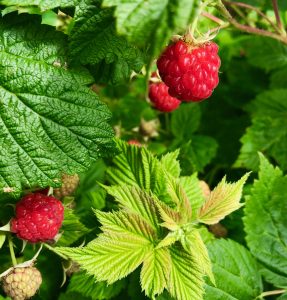 The garden has always been a place of refuge, but it seems especially so this summer. To be able to walk out, unmasked, across the dew-laden grass in the early morning to pick raspberries is to know peace. The news alerts come by way of the blue jays hectoring a squirrel in the hemlocks. Though our social lives remain meager, never has nature seemed more bountiful. The tomato vines and espaliered pear trees droop with ripening fruit. Overnight, the tightly packed pale beige raspberry buds swelled and softened. About the size of Continue reading
The garden has always been a place of refuge, but it seems especially so this summer. To be able to walk out, unmasked, across the dew-laden grass in the early morning to pick raspberries is to know peace. The news alerts come by way of the blue jays hectoring a squirrel in the hemlocks. Though our social lives remain meager, never has nature seemed more bountiful. The tomato vines and espaliered pear trees droop with ripening fruit. Overnight, the tightly packed pale beige raspberry buds swelled and softened. About the size of Continue reading
Scattered blossoms
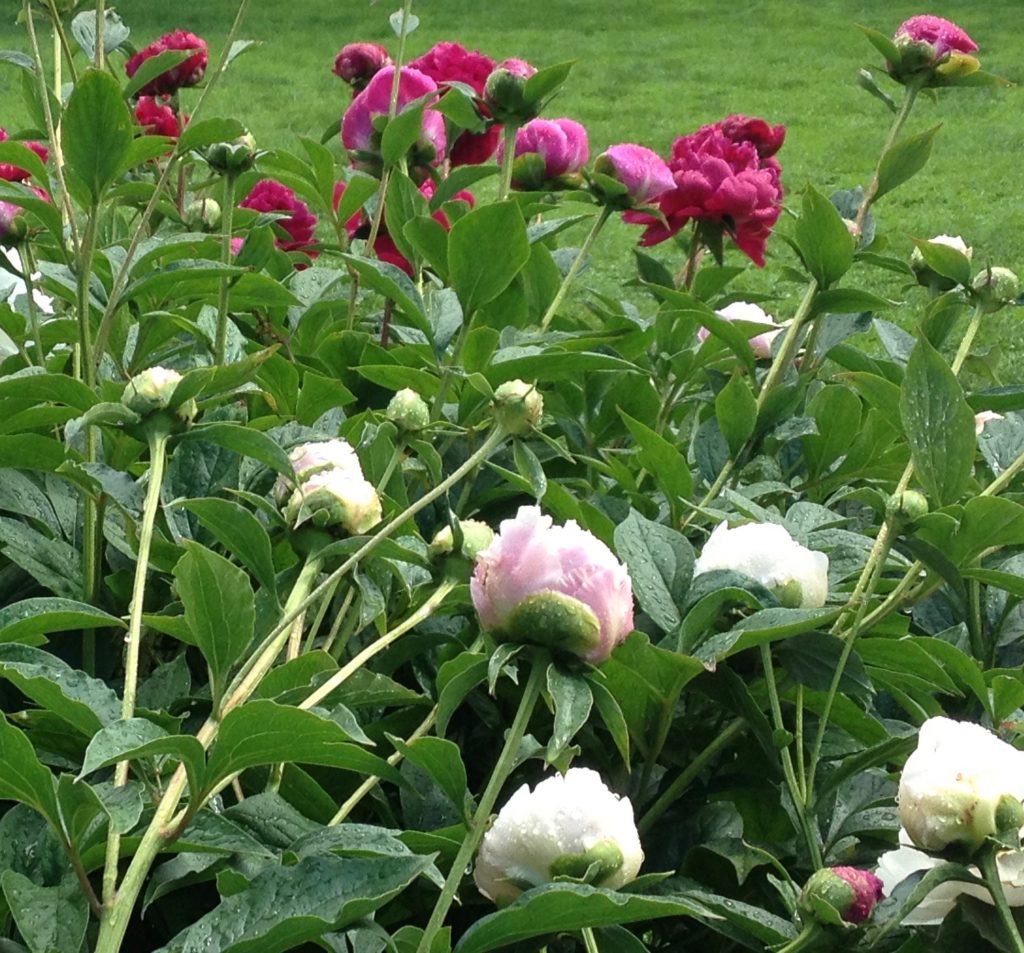 The rain has left a trail of rose and peony petals across the lawn —fresh and fragrant — as though just strewn by a flower girl at a wedding. It’s always heartbreaking to see these first fragile blooms of summer scatter to the ground. We waited so long for their arrival, checking daily through the long, chilly spring for signs of progress. Then one morning we turned Continue reading
The rain has left a trail of rose and peony petals across the lawn —fresh and fragrant — as though just strewn by a flower girl at a wedding. It’s always heartbreaking to see these first fragile blooms of summer scatter to the ground. We waited so long for their arrival, checking daily through the long, chilly spring for signs of progress. Then one morning we turned Continue reading
Nesting
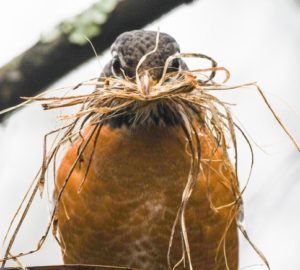 We’ve been watching the birds return to their summer homes these past few weeks. One morning, an explosion of bright orange hit the living room window as a pair of claws scrabbled at the iron mullions, trying to gain a foothold. It was a Baltimore Oriole, come back to the place that had offered free orange halves the year before. I quickly nailed fresh oranges to the porch post and soon both a male and female (not to mention a sapsucker and red squirrel) were pecking at the fruit. Continue reading
We’ve been watching the birds return to their summer homes these past few weeks. One morning, an explosion of bright orange hit the living room window as a pair of claws scrabbled at the iron mullions, trying to gain a foothold. It was a Baltimore Oriole, come back to the place that had offered free orange halves the year before. I quickly nailed fresh oranges to the porch post and soon both a male and female (not to mention a sapsucker and red squirrel) were pecking at the fruit. Continue reading
Soft rains
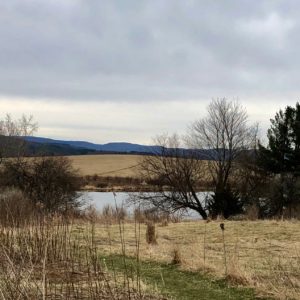 It’s been a long slow wet spring in the Berkshires. Temperatures struggle to get out of the 50s by day and sink into frost territory overnight. We’re still waking up to a dusting of snow some mornings. It feels as though we’re stuck in Ground Hog Day and will keep rebooting this unremarkable moment in mid-February forever. Though there is some comfort in the predictable rhythm of repetition right now, the sense of time passing homogeneously within the same four walls for the most part, between the same two people, protected from the jarring dissonance of change. Continue reading
It’s been a long slow wet spring in the Berkshires. Temperatures struggle to get out of the 50s by day and sink into frost territory overnight. We’re still waking up to a dusting of snow some mornings. It feels as though we’re stuck in Ground Hog Day and will keep rebooting this unremarkable moment in mid-February forever. Though there is some comfort in the predictable rhythm of repetition right now, the sense of time passing homogeneously within the same four walls for the most part, between the same two people, protected from the jarring dissonance of change. Continue reading
Spring snow
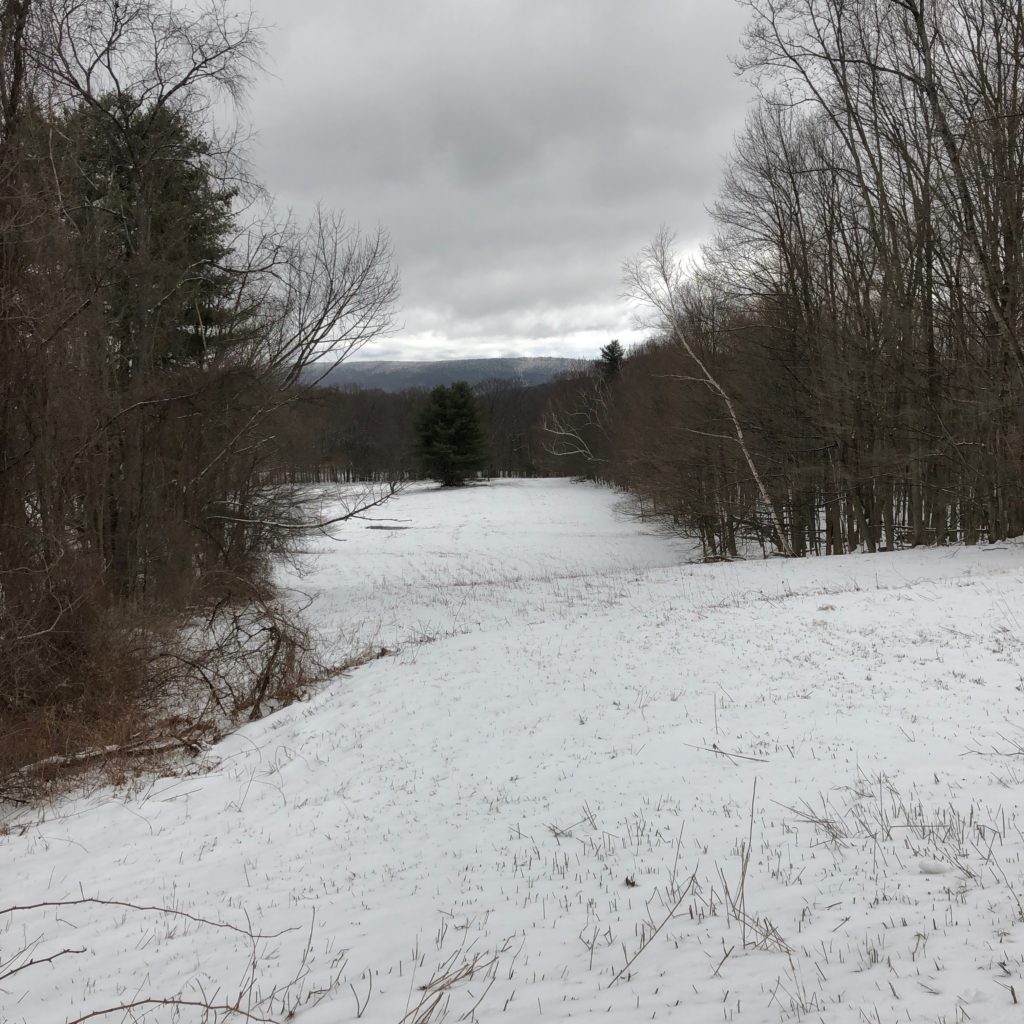 It snowed in the Berkshires yesterday. Thick lazy flakes drifted down through the late afternoon sky— too wet to stick. We went to bed with the ground outside the color of old shoe leather and woke to a blanket of white. A thin blanket, though, one riddled with the stubble of last season’s garden and pierced by the first green shoots of spring. Still, it felt like a respite of some kind — like manna, the bread of heaven that supposedly fed the Israelites as they wandered in the wilderness for 40 years.
It snowed in the Berkshires yesterday. Thick lazy flakes drifted down through the late afternoon sky— too wet to stick. We went to bed with the ground outside the color of old shoe leather and woke to a blanket of white. A thin blanket, though, one riddled with the stubble of last season’s garden and pierced by the first green shoots of spring. Still, it felt like a respite of some kind — like manna, the bread of heaven that supposedly fed the Israelites as they wandered in the wilderness for 40 years.
Skunk hour
One night a few weeks ago, just when we were getting ready for bed, an odor drifted up from the basement — one that is instantly recognizable and universally despised: skunk. At first we thought the cat had unwisely cornered a member of the mephitidae family (a close relation of the polecat and weasel), but when I went downstairs to investigate, I encountered nothing but that overwhelming smell — as eye-wateringly potent and punishing as teargas. I’ve since learned that the skunk’s noxious scent and teargas are, in fact, both lachrymators — chemical substances designed to irritate the Continue reading
Forcing bulbs
There’s nothing quite as welcome in the middle of winter as the sight of blooming paper whites or hyacinths on a sunny windowsill. These bulbs, along with daffodils, tulips, narcissus, and others are easy to force into flower — though what you’re actually doing is tricking them into thinking that winter’s over. And who doesn’t wish for that about now? Watching sprouts push out of the homely little bulbs, shoot up, and explode in a fireworks of musk and perfectly formed flower heads — is to have a front row seat for one of nature’s most accomplished magic acts.
I purchased paper whites in bulk from my favorite on-line nursery (httpss://www.longfield-gardens.com which also has an excellent newsletter) and gave them away over the holidays with simple instructions: settle them in a tray or bowl filled with pebbles or dirt, give them some sun and water — and then practice patience, as they take several weeks to flower.
Hyacinths can be grown directly in water by using a forcing vase (shown below), kept in a cool dark place for Continue reading
Journey of the Magi
Of the many subplots of the Christmas story, I’ve always been most drawn to that of the wise men. The bible doesn’t actually specify that there were three of them, just that they brought with them three gifts: gold, frankincense, and myrrh. We don’t know for certain how many there were — Eastern Christianity has twelve or more in the caravan — or where they came from, though an Armenian tradition identifies them as Balthazar of Arabia, Melchior of Persia, and Gaspar Continue reading
La Serenissima
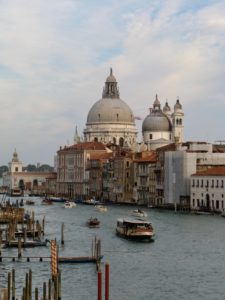 Venice has been on my mind a lot lately. It’s a city I know well enough to be able to find my way along its cobbled streets and across its marbled bridges with the aid of memory alone. There’s the Rialto rising out of the mist. A vaporetto puttering into its stop in front of the Accademia. We spent many Christmases there — when darkness fell like a velvet curtain and the lights of old palaces glittered in the inky waters. Though outwardly ostentatious and mercenary, Venice has always been a secretive and mysterious place. Many of its most stunning treasures are tucked away in unexpected places: the Carpaccio
Venice has been on my mind a lot lately. It’s a city I know well enough to be able to find my way along its cobbled streets and across its marbled bridges with the aid of memory alone. There’s the Rialto rising out of the mist. A vaporetto puttering into its stop in front of the Accademia. We spent many Christmases there — when darkness fell like a velvet curtain and the lights of old palaces glittered in the inky waters. Though outwardly ostentatious and mercenary, Venice has always been a secretive and mysterious place. Many of its most stunning treasures are tucked away in unexpected places: the Carpaccio  paintings in the tiny Scuolo San Giorgio degli Schiavoni; the tesselated marble floor, rich and intricate as an oriental carpet, mostly overlooked by the hordes being herded through the Basilica di San Marco; the mismatched pride of lions that guard the entrance to the Arsenale. At every turn, Venice is a visual feast, an alchemy of stone and light and water. And now, of course, far too much water. Continue reading
paintings in the tiny Scuolo San Giorgio degli Schiavoni; the tesselated marble floor, rich and intricate as an oriental carpet, mostly overlooked by the hordes being herded through the Basilica di San Marco; the mismatched pride of lions that guard the entrance to the Arsenale. At every turn, Venice is a visual feast, an alchemy of stone and light and water. And now, of course, far too much water. Continue reading
Taking down the trees
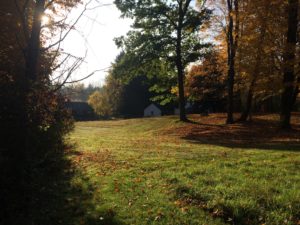 They were dead. Or dying. Two crab apples that had been strangled by vines. A great old dark cherry, standing astride our back woods, that had been riddled by insects and then jackhammered by woodpeckers and sapsuckers for so many years that its insides had been Continue reading
They were dead. Or dying. Two crab apples that had been strangled by vines. A great old dark cherry, standing astride our back woods, that had been riddled by insects and then jackhammered by woodpeckers and sapsuckers for so many years that its insides had been Continue reading
The Light of September
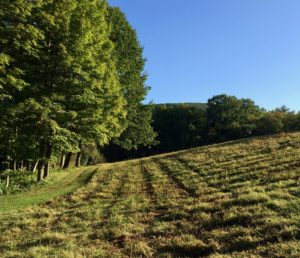 As the days grow shorter and shadows lengthen, the contours of the newly mown field and the sloping shoulders of the mountain ridge come into focus again. Summer’s exuberant abundance — the drifts of phlox and unruly ranks of wild flowers — has given way to a stricter, more measured order. Change is everywhere, though still as gradual as the shifting sunlight. It’s warm enough for the cosmos to keep blooming, but they’re aging beauties now, their desiccated flower heads nodding on thinning stalks. The morning birdsong — Continue reading
As the days grow shorter and shadows lengthen, the contours of the newly mown field and the sloping shoulders of the mountain ridge come into focus again. Summer’s exuberant abundance — the drifts of phlox and unruly ranks of wild flowers — has given way to a stricter, more measured order. Change is everywhere, though still as gradual as the shifting sunlight. It’s warm enough for the cosmos to keep blooming, but they’re aging beauties now, their desiccated flower heads nodding on thinning stalks. The morning birdsong — Continue reading
Japanese eggplant
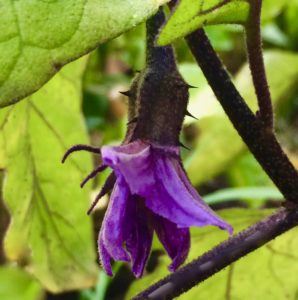 Sleek, thin-skinned, and mild, Japanese (Ichiban) eggplant is an entirely different animal from its larger, fleshier Italian cousin. Obviously, it’s not an animal, but eggplant is a member of the nightshade family, along with tomatoes and potatoes, and therefore classified botanically as a fruit. I put in half a dozen Japanese eggplants early this summer and have been rewarded with a sweet, succulent, almost seedless harvest ever since. Their leaves are a lovely dark green with purple veins, their stems a sticky dark purple, but it’s Continue reading
Sleek, thin-skinned, and mild, Japanese (Ichiban) eggplant is an entirely different animal from its larger, fleshier Italian cousin. Obviously, it’s not an animal, but eggplant is a member of the nightshade family, along with tomatoes and potatoes, and therefore classified botanically as a fruit. I put in half a dozen Japanese eggplants early this summer and have been rewarded with a sweet, succulent, almost seedless harvest ever since. Their leaves are a lovely dark green with purple veins, their stems a sticky dark purple, but it’s Continue reading

